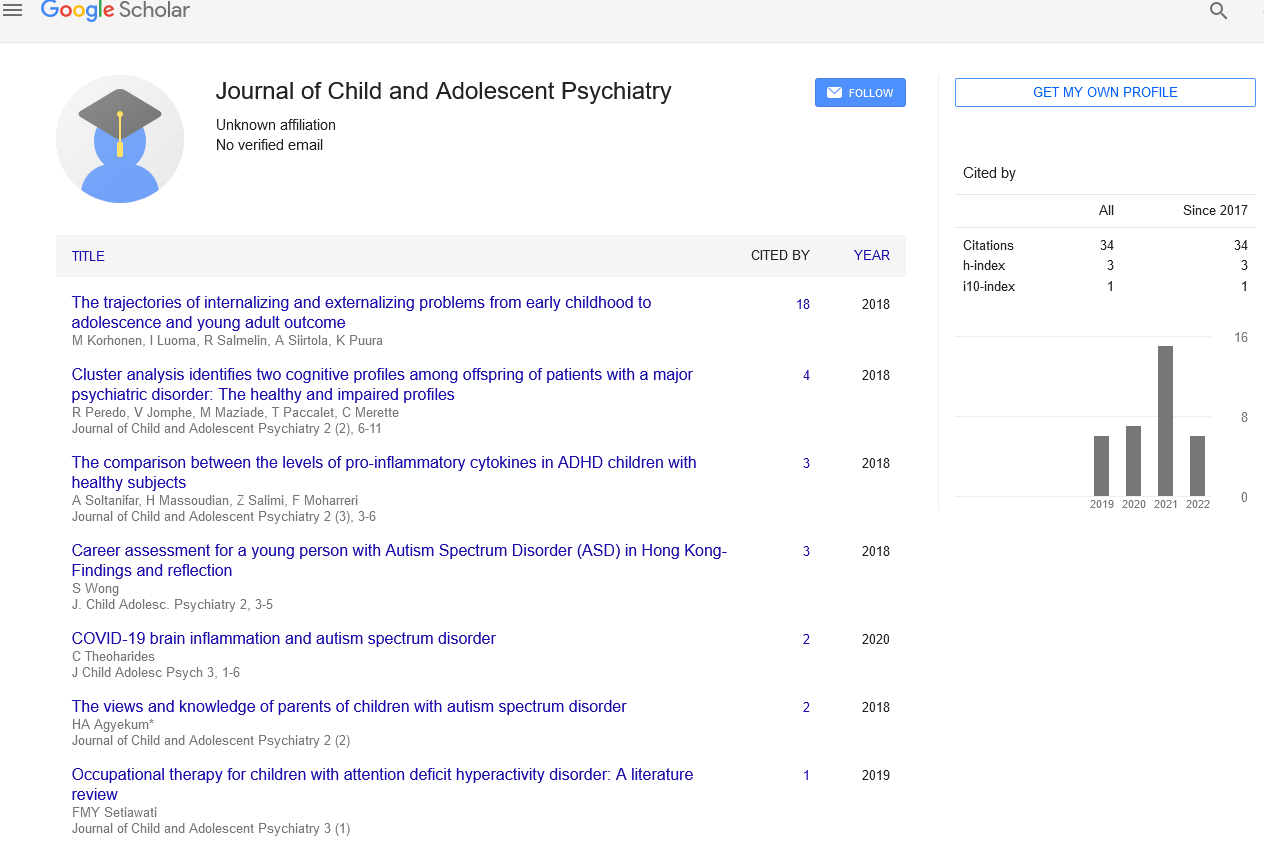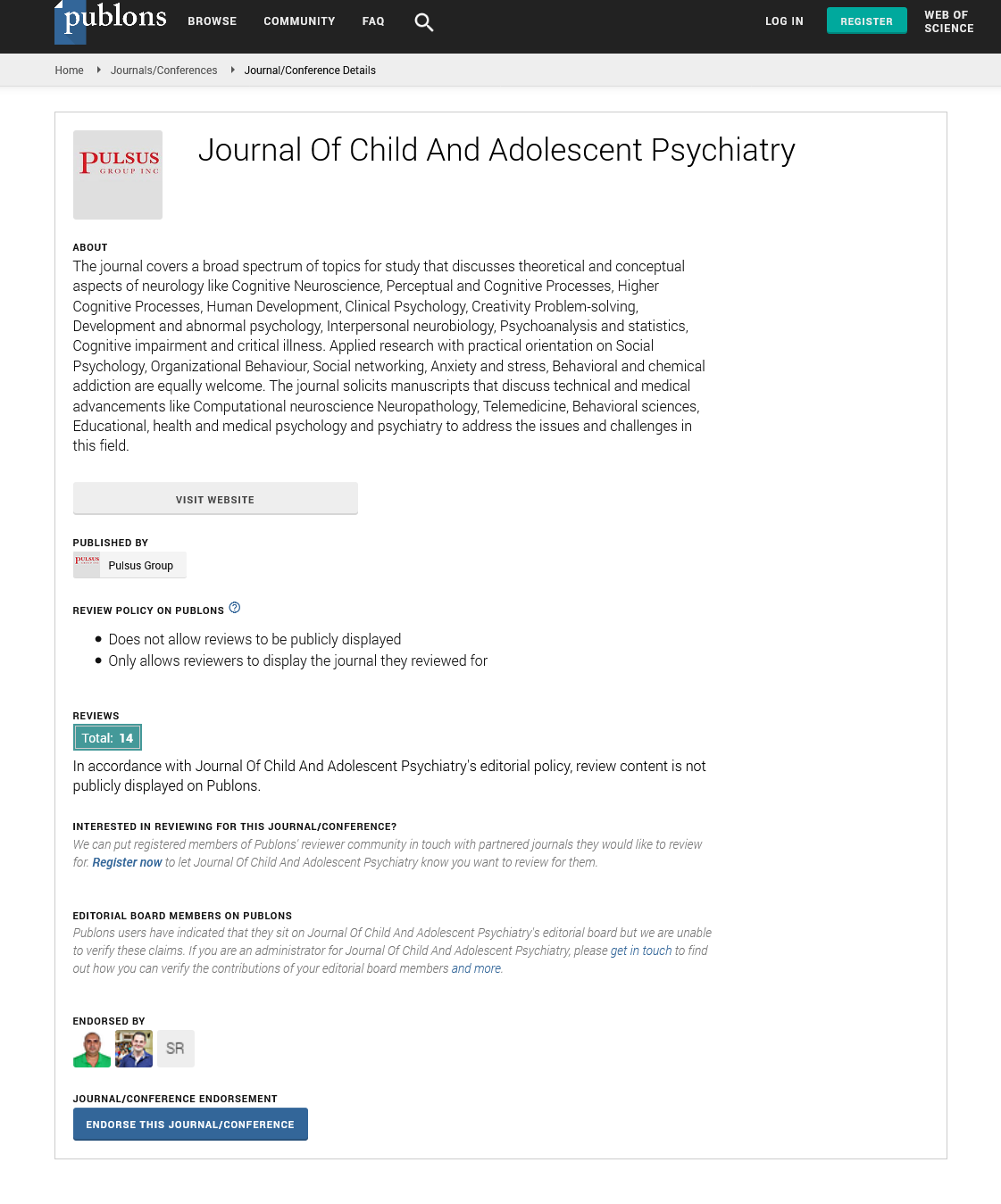Prevention of Psychological Problems has a Great Prospect.
Received: 21-Jan-2022, Manuscript No. PULJACP-22-4724; Editor assigned: 23-Jan-2022, Pre QC No. PULJACP-22-4724(PQ); Reviewed: 27-Jan-2022 QC No. PULJACP-22-4724(Q); Revised: 03-Mar-2022, Manuscript No. PULJACP-22-4724(R); Published: 13-Mar-2022, DOI: 10.37532/puljacp.2022. 6(2)-18-19
This open-access article is distributed under the terms of the Creative Commons Attribution Non-Commercial License (CC BY-NC) (http://creativecommons.org/licenses/by-nc/4.0/), which permits reuse, distribution and reproduction of the article, provided that the original work is properly cited and the reuse is restricted to noncommercial purposes. For commercial reuse, contact reprints@pulsus.com
Abstract
The state of prevention in psychiatry is examined in four ways in this article. The first impression is negative, generated by dissatisfaction with the sluggish pace of development in understanding psychiatric disorders and the lack of promise in prevention. The second look is a little more haughty. It characterises and acknowledges what has been accomplished thus far. The third and fourth viewpoints, which are both hopeful, herald a new era in research and prevention. Within the next 10-15 years, breakthroughs that are already visible on the horizon will turn the prevention of psychiatric disorders into a success story.
Perspective
There are a considerable number of contentions that can lead us to uncertainty in the possibilities of mental examination and treatment:
• The clashing conversations on the quantity of judgments carried out in the new form of the Diagnostic and Statistical Manual of Mental Disorders : plainly behind the times on the off chance that psychiatry were a creating discipline
• The proceeding with inability to comprehend the etiopathogenesis of mental infections the terms mental sicknesses and mental problems are utilized conversely in spite of advancing fundamental examination in neurosciences and the accessibility of bunches of exact outcomes
• The troubles in enhancing all out with layered ideas in infection models and pondering mental findings.
• The absence of significant disclosures and advancements in examination, treatments, and medication improvement in late many years.
• The minister catalyst of new and exceptionally excess ideas connected with positive psychological wellness, for example, locus of control, self-viability, strength, feeling of intelligibility, the capacity to appreciate people at their core, versatility, adapting and so on
In counteraction, the appalling situation is principally reflected by the absence of essential-specifically, widespread-avoidance endeavors. Disillusionment is evident in the 2001 WHO report, which expressed: "At present, there is no proof that mediations proposed for essential avoidance of discouragement are powerful besides in a couple of disconnected examinations. As of now, essential avoidance of schizophrenia is beyond the realm of possibilities. The exact etiology of the hyperkinetic messes-hyperactivity in kids, frequently with compulsory solid fits-is obscure, subsequently essential anticipation is at present unrealistic.” Meanwhile, further WHO endlessly reports from different associations have been distributed. Many setting-and gathering explicit anticipation projects have been started. In any case, there is still no adequate information about unambiguous gamble variables and explicit etiopathogenic instruments that could be executed in unambiguous avoidance measures. The greater part of the known biopsychosocial risk factors are nonexclusive and apply to numerous neuropsychiatric and mental infections. While a portion of the gamble factors (physical and sexual maltreatment, harassing, maternal contaminations during pregnancy) would be really agreeable by means of essential anticipation gauges, this is challenging for other gamble factors (joblessness, loss of friends and family, and so on), where avoidance can scarcely conquer the constraint of being an insignificant detail. Conduct changes in the populace, either socially or financially molded, effectively eclipse any very much expected endeavors. By the by, given the profile of most mental illnesses-youthful age at beginning, persistent course, elevated degrees of comorbiditypowerful essential counteraction measures would be remarkably advantageous. In the interim, there is no deliberate, smart widespread
anticipation tending to enormous gatherings of the populace or the populace overall. To exacerbate the situation, public psychological wellness (and subsequently certainly the anticipation of mental illnesses) is dependent upon standards, expectations, and targets created in general wellbeing, which in their divert have risen up out of profoundly evolved and effective sub disciplines managing irresistible sicknesses, cardiovascular infections, or disease. What might general wellbeing resemble in the event that it thought often about the most troublesome issues, for instance immune system or neurological sicknesses, i.e., complex illnesses with a to a great extent obscure etiology, unadulterated restorative open doors, early age at beginning, and a commonly persistent course? This non-serious inquiry unveils clear that the impression of what wellbeing is and what anticipation ought to do, is exceptionally slanted. Zeroing in on sicknesses of advanced age and a few intense illnesses isn't the principle extent of public emotional well-being or of general wellbeing connected with autoimmunity and nervous system science. The model shows initially that anticipation of mental issues includes determinations and side effects as well as ways of behaving, for example, self-destruction, substance use, and others that are connected with physical capacities (rest, eating, and so forth). There are fundamental contrasts between the anticipation of mental issues and the counteraction of conduct issues. Normally, the last option offers a greater number of chances than the previous, and vow to find success. Self-destruction is a fascinating model for a very long time. A new important part of self-destruction is the unforeseen 20%-40% reduction in rates in numerous Western nations over late many years. This not just offers moving chances to find out about fundamental instruments yet additionally demonstrates that social problems are seldom static, regularly go through change, and subsequently put forth counteraction attempts promising. The new lessening in self-destruction rates has been ascribed to expanding remedy paces of antidepressants, that is to say, to further developed administrations. While a creator’s characteristic this advancement to the accessibility of Specific Serotonin Reuptake Inhibitors (SSRIs), it appears to be no less reasonable in the time of pressure and burnout that the assistance looking for conduct of youthful and better instructed people has unmistakably changed and subsequently the interest for administrations. The range of pertinent counteraction areas might separate among particular conduct issues. Notwithstanding, moving toward means and ways of behaving consistently stays an extra choice separated from tending to feelings and disposition. Above all, counteraction measures here additionally incorporate essential and general anticipation. The actions can be both circuitous and direct, i.e., address the objective way of behaving explicitly. The instance of selfdestruction shows that counteraction has more switches in certain areas of public psychological well-being than in others. A subsequent enormous gathering of counteraction measures is coordinated in territorial or public missions situated at the halfway point among essential and optional anticipation. One significant course is to battle shame of mental issues see, for instance "an opportunity to change" crusade, not exclusively to work on the economic wellbeing of deranged people yet additionally to urge individuals to look for help early while experiencing mental issues. Another significant heading is to further develop information (psychological well-being proficiency) and to change perspectives toward emotional well-being and dysfunctional behavior overall. An illustration of such a mission is the Nuremberg union against sorrow, which follows a few focuses on once inside a coordinated activity plan: preparing and backing of family specialists, advertising efforts giving data about sadness, participation with experts and neighborhood media, and backing for self-improvement exercises and for high-risk gatherings.
Keywords
Dissatisfaction;Psychiatric






